Old Wethersfield, Connecticut | Could You Live Here?
Old Wethersfield, CT, the Nutmeg State’s largest historic district may be the most perfect walking village in all of New England.
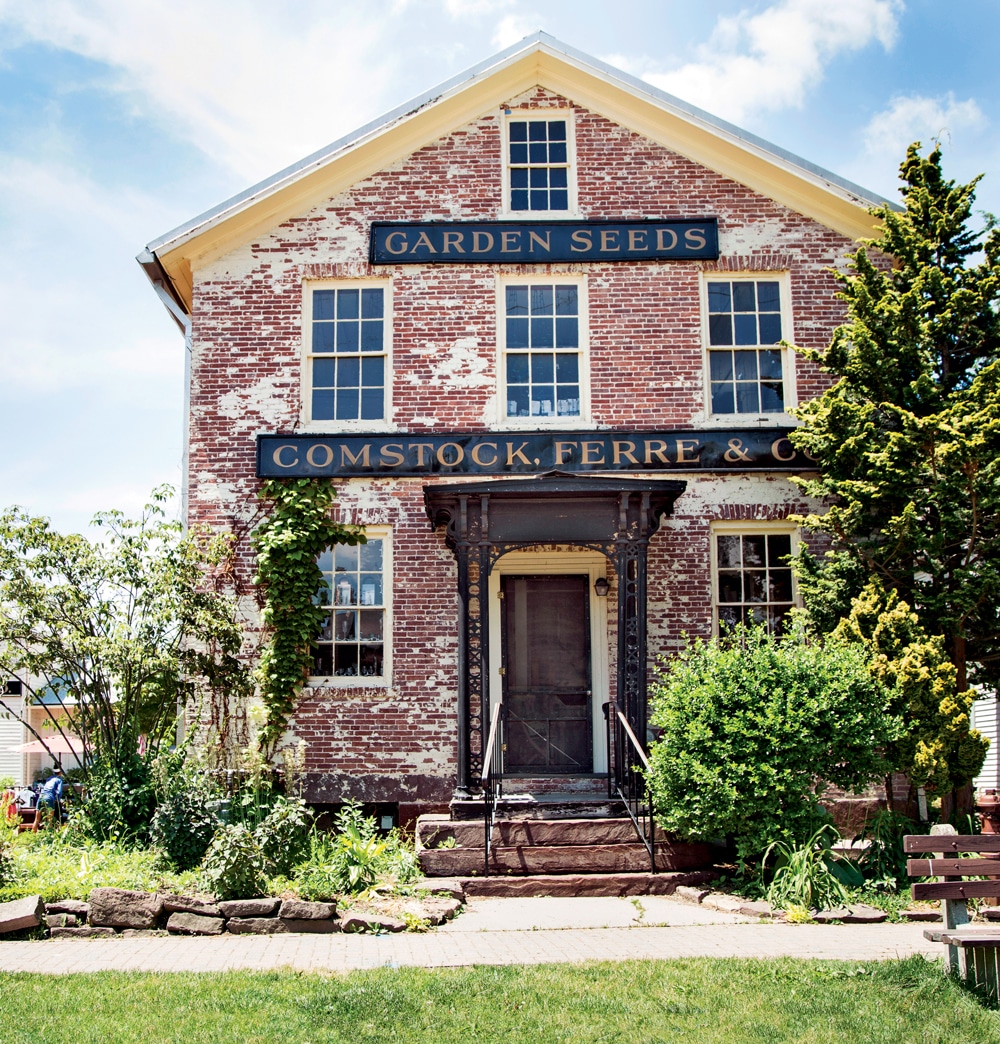
Long-standing seed purveyor Comstock, Ferre in Old Wethersfield, CT.
Photo Credit : Julie Bidwell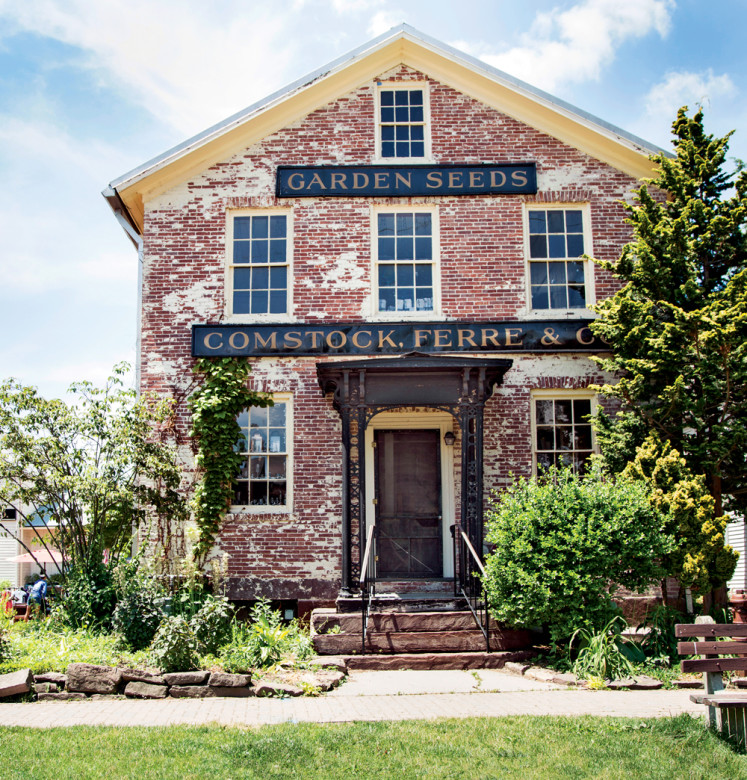
Photo Credit : Julie Bidwell
The adventurers built their homes on the future Wethersfield town green before there was a town, before there was a United States. In 1634 this was the king’s land, though it was already farmed by Native Americans. Metal markers scattered around today’s Broad Street Green indicate where those first England-born colonists raised up their dwellings: We’re walking the same rich earth as Captain Robert Seeley, Abraham Finch, and Leonard Chester of Blaby. Their pasture is now our playground.
Broad Street Green’s half-mile-long expanse, poised at the southern end of the Old Wethersfield historic district, is still ringed with colonial homes and dotted with ancient trees. It’s just a block from the Buttolph-Williams House, the dark clapboard beauty that was the setting for Elizabeth Speare’s award-winning children’s book The Witch of Blackbird Pond, which detailed life here in the 1600s, when innocent folks could be accused of witchcraft based on a bit of bad weather. Farther down the street, the Ancient Burying Ground rises up with timeworn tombstones that read like stories of their own; among these, four stones mark the graves of slaves.
Old Wethersfield is a 2-square-mile antique storehouse of venerable homes. Main Street features colonial triplets from the 1700s that now compose the Webb-Deane-Stevens Museum, including a home where, in fact, George Washington slept. Ship captains’ houses cluster near Wethersfield Cove, echoes of a once-bustling inland port that traded with the West Indies. Agricultural history sits tucked behind the faded 1820s brick facade of Comstock, Ferre, the country’s oldest continuously operating seed company. Rich layers of intrigue, not two minutes from I-91—a highway exit, it seems, can turn back time.

Photo Credit : Julie Bidwell
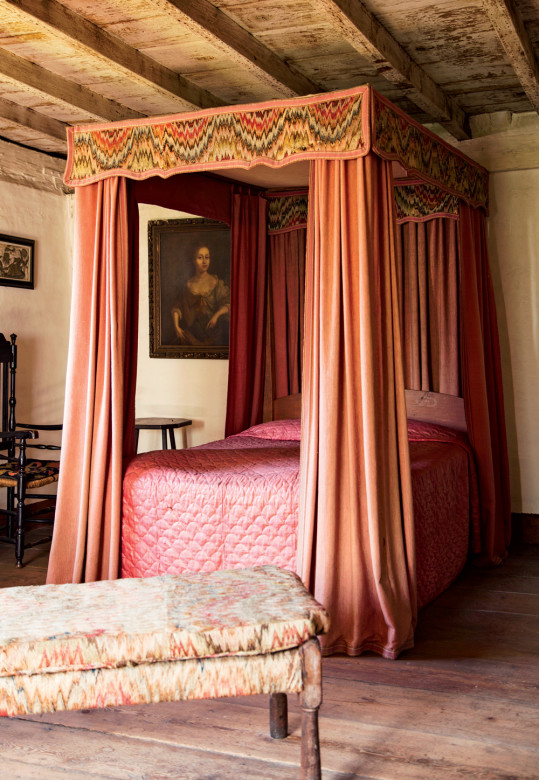
Photo Credit : Julie Bidwell

Photo Credit : Julie Bidwell
The Setting
“After living in Europe, I wanted a place where I could walk,” says Paula Rubinow, bustling between tables at her Main Street Creamery & Café. No question, Old Wethersfield is a stroller’s nirvana, traversed by miles of flat, well-maintained sidewalks, inviting as a stretch of beach, with plenty to see: This section of Wethersfield is Connecticut’s largest historic district, a primer of architectural styles, and its condensed nature heightens the impact of 150 structures built before 1850, most bearing names and dates. It’s an island of antiquity bordered by modern life, with I-91 to the east, Silas Deane Highway to the west (shopping centers and food stops), and grittier South Hartford immediately north.
A mile-and-a-half amble from the center, Wethersfield Cove links to the Connecticut River via Folly Brook, nourishing the fertile alluvial soil that inspired residents to found two of America’s oldest seed companies, still flourishing, and fostered perfect growing conditions for the famous local Wethersfield Red onions.
The Social Scene
Membership in the Webb-Deane-Stevens Museum means scoring invitations to Thanksgiving dinner and first dibs at April’s Tags and Treasures sale. Volunteers also maintain the 1921 Colonial Revival garden behind the Webb House, says tour guide Katie Sullivan, who helps bring the museum’s three houses to life (all are owned by the Connecticut chapter of the Colonial Dames). The Wethersfield Historical Society dangles its own roster of socializing opportunities, from leading tours of Wethersfield Cove’s 17th-century warehouse to volunteering at events like Taste of Wethersfield. But when it’s time for a blowout, Old Wethersfield can party like it’s 1776, with a Memorial Day Revolutionary War encampment that pits British redcoats against the Fifth Connecticut Regiment (and coincides with Comstock, Ferre’s Heirloom Festival extravaganza).
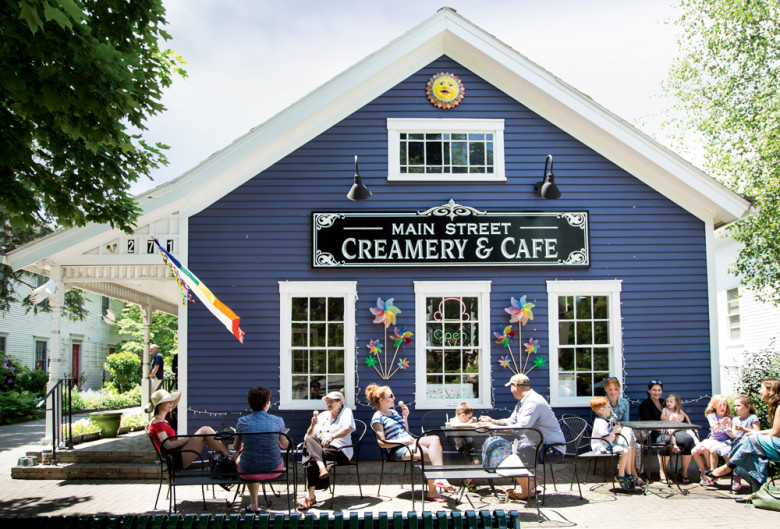
Photo Credit : Julie Bidwell
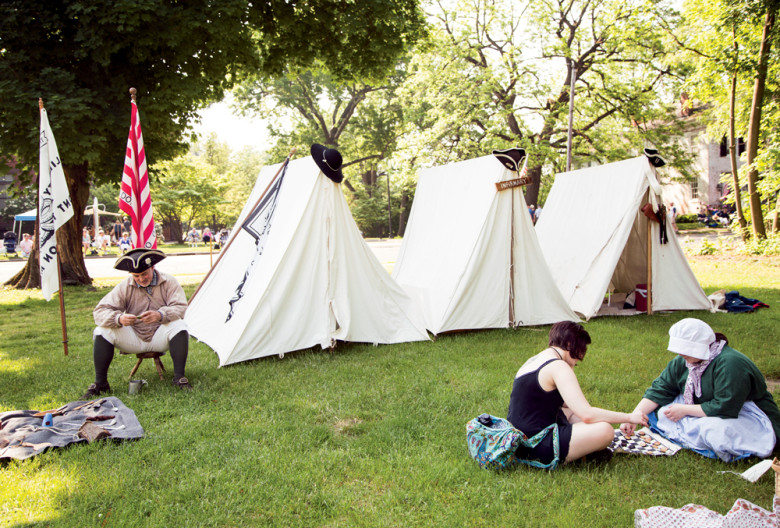
Photo Credit : Julie Bidwell
Eating Out
Summer nights on the terrace are sweet at Lucky Lou’s, a casually elegant Main Street bar and grill in the 1787 gambrel-roofed Deming-Standish House. Chef-owner Lucas Kyriakos waxes poetic about the 35-pound halibut he can’t wait to carve up, but it’s hard to believe it could surpass last night’s sea bass and mashed cauliflower. His cousins, Spiro and Julia Koulouris, conjure farm-to-fork fare across the street at Comstock, Ferre’s new Heirloom Market café. Dessert central is Main Street Creamery & Café, mostly known as Paula’s. “Where is she?” demands one young customer. “I want to show her my Irish jig.” Look overhead and you’ll see why Rubinow changed her mind about selling the business, after customers begged her to stay: Every inch of ceiling is covered with photos of families, friends, and generations of kids who’ll never forget that this was their place.
Shopping
Choose from some 1,800 varieties of seeds at Comstock, Ferre or at Hart’s Seed Company, founded in 1892, across the street. Check out the conjoined shops Heart of the Country (teas, table linens, jewelry) and Antiques on Main, which is like rummaging through a great old trunk with prices from yesteryear. “I don’t know what it is, but I hope I never sell it,” says Antiques on Main owner Joan Hughes, when I ask her about the silver doodad wrapped around two marbles beside the register. “Every man who comes in here carries it over to the window and studies it to figure out what it is.” A few blocks away, on Silas Deane Highway, lurks the “real” shopping world.
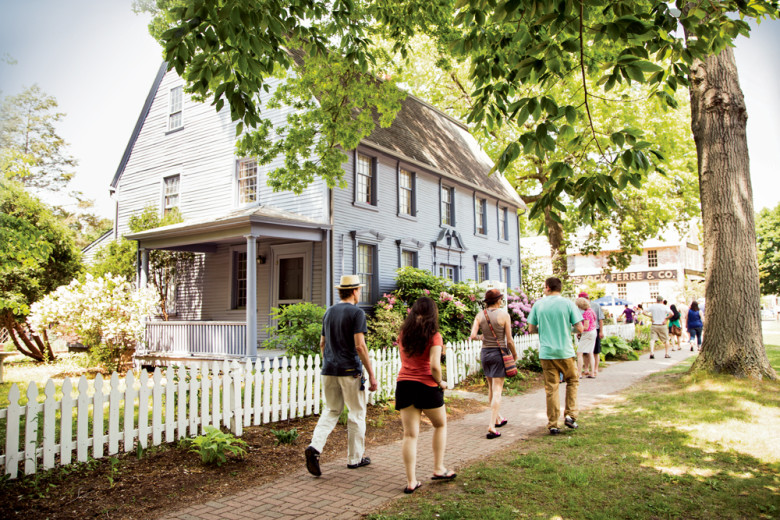
Photo Credit : Julie Bidwell
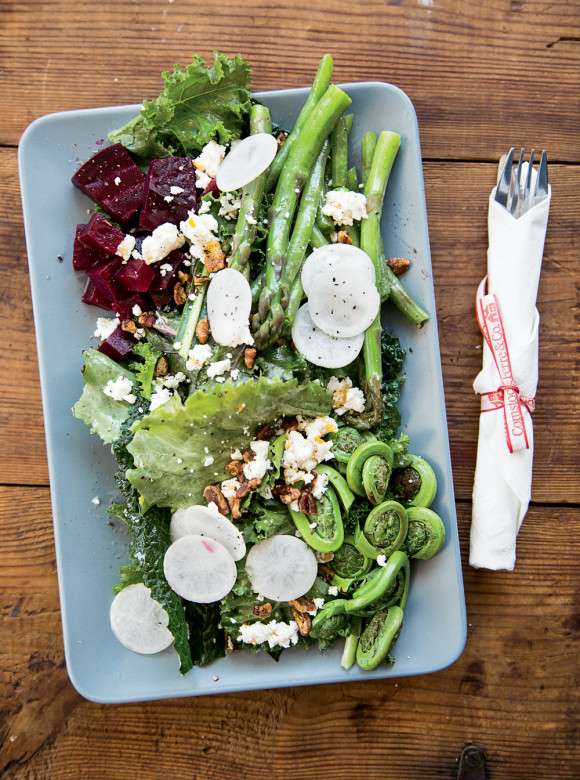
Photo Credit : Julie Bidwell
Real Estate
As of this writing, General Wallace T. Fenn’s charming 1890s four-bedroom residence, located on Broad Street Green and needing some rehab, was for sale for $299,900. The 1774 Captain Josiah Buck Homestead—4,000 square feet of history with nine fireplaces, an in-ground pool, and two barns, all overlooking Wethersfield Cove—listed at $499,900. And a new center-chimney saltbox with three bedrooms, situated in the historic district near the cove, was being offered for $325,000.
Resident Perks
George Washington not only slept here, in a beautifully preserved bedchamber, but also made history: In 1781 he met with General Rochambeau at the 1752 Joseph Webb House to plan the campaigns that would lead to victory at Yorktown. There’s a Wallace Nutting connection, too, as the famous photographer owned the Webb House until 1919, when he sold it to the Colonial Dames. Elaborate murals were uncovered when the wallpaper was removed some years ago. Webb-Deane-Stevens Museum guides take visitors through all three houses; at Christmas, each is decorated in the style of a different century.
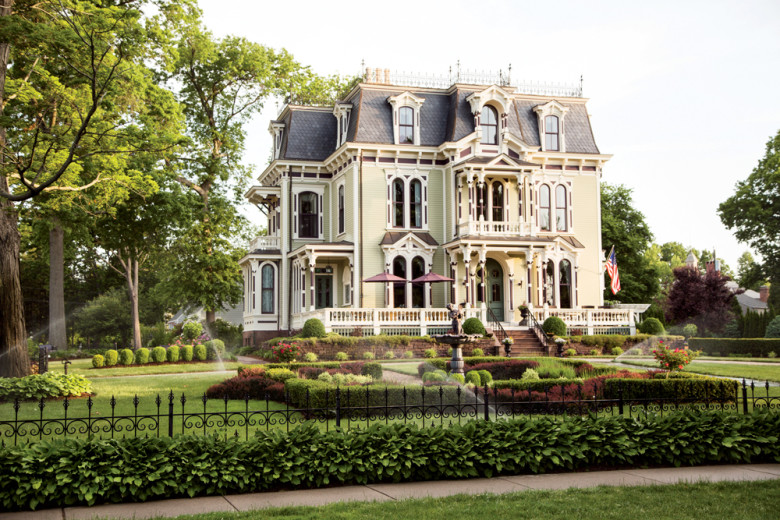
Photo Credit : Julie Bidwell
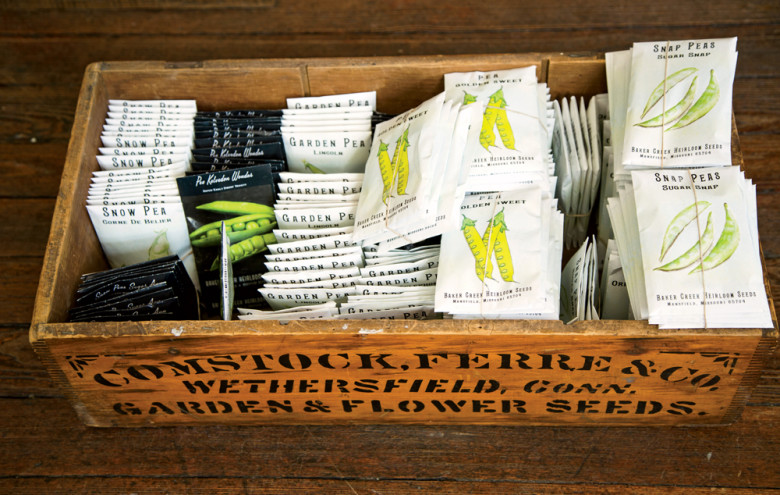
Photo Credit : Julie Bidwell
Getting Your Bearings
The Silas W. Robbins House Bed and Breakfast is a quietly opulent 1873 Second Empire mansion overlooking Broad Street Green. (“They’re our heroes,” says tour guide Sullivan of the owners, John and Shireen Aforismo, who undertook a heroic six-year restoration of the fire-damaged beauty, currently for sale.) The 1830 Chester Bulkley House offers Greek Revival elegance on Main Street, and for a rare treat, Butternut Farm in next-door Glastonbury (once part of Wethersfield) lets you sink into the ambience of Jonathan Hale’s 1720 colonial, with period antiques plus chickens, ducks, and goats, under the gracious care of innkeeper Don Reid, who has hosted this bed-and-breakfast for 40 years.
SEE MORE:Scenes from Wethersfield, CT | PhotographsExploring Historic Old Wethersfield, Connecticut
Annie Graves
A New Hampshire native, Annie has been a writer and editor for over 25 years, while also composing music and writing young adult novels.
More by Annie Graves

